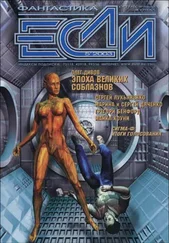Brothers, J. R., & Lohmann, K. J. (2018). ‘Evidence that Magnetic Navigation and Geomagnetic Imprinting Shape Spatial Genetic Variation in Sea Turtles’, Current Biology, 28 (8). P. 1325–1329.
Endres, C. S., and Lohmann, K. J. (2013). ‘Detection of coastal mud odors by loggerhead sea turtles: a possible mechanism for sensing nearby land’, Marine Biology, 160 (11). P. 2951–2956.
Endres, C. S., Putman, N. F., Ernst, D. A., Kurth, J. A., Lohmann, C. M., & Lohmann, K. J. (2016). ‘Multi-modal homing in sea turtles: modeling dual use of geomagnetic and chemical cues in island-finding’, Frontiers in Behavioral Neuroscience, 10. P. 19.
Lohmann, K. J., Lohmann, C. M., & Endres, C. S. (2008). ‘The sensory ecology of ocean navigation’, Journal of Experimental Biology, 211 (11). P. 1719–1728.
То есть омарам.
Английское название SQUID – аббревиатура от слов Superconducting Quantum Interference Device , совпадающая со словом squid , то есть «кальмар».
Lohmann, K., Pentcheff, N., Nevitt, G., Stetten, G., Zimmer-Faust, R., Jarrard, H., & Boles, L. C. (1995). ‘Magnetic orientation of spiny lobsters in the ocean: experiments with undersea coil systems’, Journal of Experimental Biology, 198 (10). P. 2041–2048.
Boles, L. C., & Lohmann, K. J. (2003). ‘True navigation and magnetic maps in spiny lobsters’, Nature, 421 (6918). P. 60–63.
Baker, R. R. (1980). ‘Goal orientation by blindfolded humans after long-distance displacement: Possible involvement of a magnetic sense’, Science, 210 (4469). P. 555–557.
Fildes, B. N., O’Loughlin, B. J., Bradshaw, J. L., & Ewens, W. J. (1984). ‘Human orientation with restricted sensory information: no evidence for magnetic sensitivity’, Perception, 13 (3). P. 229–248.
В июле 2018 года.
Речной, или обыкновенный, угорь ( Anguilla anguilla ).
Naisbett-Jones, L. C., Putman, N. F., Stephenson, J. F., Ladak, S., & Young, K. A. (2017). ‘A magnetic map leads juvenile European eels to the Gulf Stream’, Current Biology, 27 (8). P. 1236–1240.
Durif, C. M., Bonhommeau, S., Briand, C., Browman, H. I., Castonguay, M., Daverat, F., … & Moore, A. (2017). ‘Whether European eel leptocephali use the earth’s magnetic field to guide their migration remains an open question’, Current Biology, 27 (18), R 998–R 1000.
Kobayashi, A., & Kirschvink, J. L. (1995). ‘Magnetoreception and electromagnetic field effects: sensory perception of the geomagnetic field in animals and humans’.
Taylor, B. K., Johnsen, S., & Lohmann, K. J. (2017). ‘Detection of magnetic field properties using distributed sensing: a computational neuroscience approach’, Bioinspiration & Biomimetics, 12 (3), 036013.
Gould & Gould, Nature’s Compass, op. cit. P. 111–114.
Anderson, J. M., Clegg, T. M., Véras, L. V., & Holland, K. N. (2017). ‘Insight into shark magnetic field perception from empirical observations’, Scientific Reports, 7 (1). P. 11042.
Fleissner, G., Stahl, B., Thalau, P., Falkenberg, G., & Fleissner, G. (2007). ‘A novel concept of Fe-mineral-based magnetoreception: histological and physicochemical data from the upper beak of homing pigeons’, Naturwissenschaften, 94 (8). P. 631–642.
Mora, C. V., Davison, M., Wild, J. M., & Walker, M. M. (2004). ‘Magnetoreception and its trigeminal mediation in the homing pigeon’, Nature, 432 (7016). P. 508.
Treiber, C. D., Salzer, M. C., Riegler, J., Edelman, N., Sugar, C., Breuss, M., … & Shaw, J. (2012). ‘Clusters of iron-rich cells in the upper beak of pigeons are macrophages not magnetosensitive neurons’, Nature, 484 (7394). P. 367.
Zapka, M., Heyers, D., Hein, C. M., Engels, S., Schneider, N. L., Hans, J., … & Mouritsen, H. (2009). ‘Visual but not trigeminal mediation of magnetic compass information in a migratory bird’, Nature, 461 (7268). P. 1274.
Gagliardo, A., Ioalè, P., Savini, M., & Wild, J. M. (2006). ‘Having the nerve to home: trigeminal magnetoreceptor versus olfactory mediation of homing in pigeons’, Journal of Experimental Biology, 209 (15). P. 2888–2892.
Kishkinev, D., Chernetsov, N., Heyers, D., & Mouritsen, H. (2013). ‘Migratory reed warblers need intact trigeminal nerves to correct for a 1,000 km eastward displacement’, PLoS One, 8 (6), e65847.
Holland, R. A., & Helm, B. (2013). ‘A strong magnetic pulse affects the precision of departure direction of naturally migrating adult but not juvenile birds’, Journal of The Royal Society Interface, 10 (81), 20121047.
Подробный обзор этой темы см.: Mouritsen, H. (2015). ‘Magnetoreception in birds and its use for long-distance migration’, Sturkie’s Avian Physiology. P. 113–133.
Wu, L. Q., & Dickman, J. D. (2012). ‘Neural correlates of a magnetic sense’, Science, 336 (6084). P. 1054–1057.
Schulten, K., Swenberg, C. E., & Weller, A. (1978). ‘A biomagnetic sensory mechanism based on magnetic field modulated coherent electron spin motion’, Zeitschrift für Physikalische Chemie, 111 (1). P. 1–5.
Подробный обзор данных по радикальным парам см.: Hore, P. J., and Henrik Mouritsen (2016). ‘The radical-pair mechanism of magnetoreception’, Annual Review of Biophysics, 45. P. 299–344.
Zapka, M., Heyers, D., Hein, C. M., Engels, S., Schneider, N. L., Hans, J., … & Mouritsen, H. (2009). ‘Visual but not trigeminal mediation of magnetic compass information in a migratory bird’, Nature, 461 (7268). P. 1274.
Gegear, R. J., Casselman, A., Waddell, S., & Reppert, S. M. (2008). ‘Cryptochrome mediates light-dependent magnetosensitivity in Drosophila’, Nature, 454 (7207). P. 1014; Gegear, R. J., Foley, L. E., Casselman, A., & Reppert, S. M. (2010). ‘Animal cryptochromes mediate magnetoreception by an unconventional photochemical mechanism’, Nature, 463 (7282). P. 804.
Bazalova, O., Kvicalova, M., Valkova, T., Slaby, P., Bartos, P., Netusil, R., … & Damulewicz, M. (2016). ‘Cryptochrome 2 mediates directional magnetoreception in cockroaches’, Proceedings of the National Academy of Sciences, 113 (6). P. 1660–1665.
В большинстве случаев, но не всегда: например, солнечная электроэнергетика основана на другом принципе.
Стефано Лоренцини (р. ок. 1652).
Jungerman, R. L., & Rosenblum, B. (1980). ‘Magnetic induction for the sensing of magnetic fields by animals – an analysis’, Journal of Theoretical Biology, 87 (1). P. 25–32.
Читать дальше
![Дэвид Барри Супернавигаторы [О чудесах навигации в животном мире] [litres] обложка книги](/books/393891/devid-barri-supernavigatory-o-chudesah-navigacii-v-cover.webp)


![Лайза Николь - Винсент и Самый Необыкновенный Отель в Мире [litres]](/books/392769/lajza-nikol-vinsent-i-samyj-neobyknovennyj-otel-thumb.webp)
![Роберт Хофрихтер - Таинственная жизнь грибов. Удивительные чудеса скрытого от глаз мира [litres]](/books/393118/robert-hofrihter-tainstvennaya-zhizn-gribov-udivit-thumb.webp)
![Антон Серовский - Воплощение в подлунном мире [litres]](/books/393561/anton-serovskij-voplochenie-v-podlunnom-mire-litre-thumb.webp)

![Пема Чодрон - Приветствуя трудности [Как жить полноценной жизнью в несовершенном мире] [litres]](/books/400446/pema-chodron-privetstvuya-trudnosti-kak-zhit-polnoc-thumb.webp)
![Барри Пэйн - Новый Гулливер [Затерянные миры. Том XXIV]](/books/406917/barri-pejn-novyj-gulliver-zateryannye-miry-tom-xx-thumb.webp)
![Ирина Млодик - Ограниченные невозможности. Как жить в этом мире, если ты не такой, как все [litres]](/books/418655/irina-mlodik-ogranichennye-nevozmozhnosti-kak-zhit-thumb.webp)
![Дэвид Бишоф - Чужие - Геноцид. Чужая жатва [сборник, litres]](/books/421774/devid-bishof-chuzhie-genocid-chuzhaya-zhatva-sbornik-thumb.webp)
![Элиф Шафак - 10 минут 38 секунд в этом странном мире [litres]](/books/433725/elif-shafak-10-minut-38-sekund-v-etom-strannom-mire-thumb.webp)
